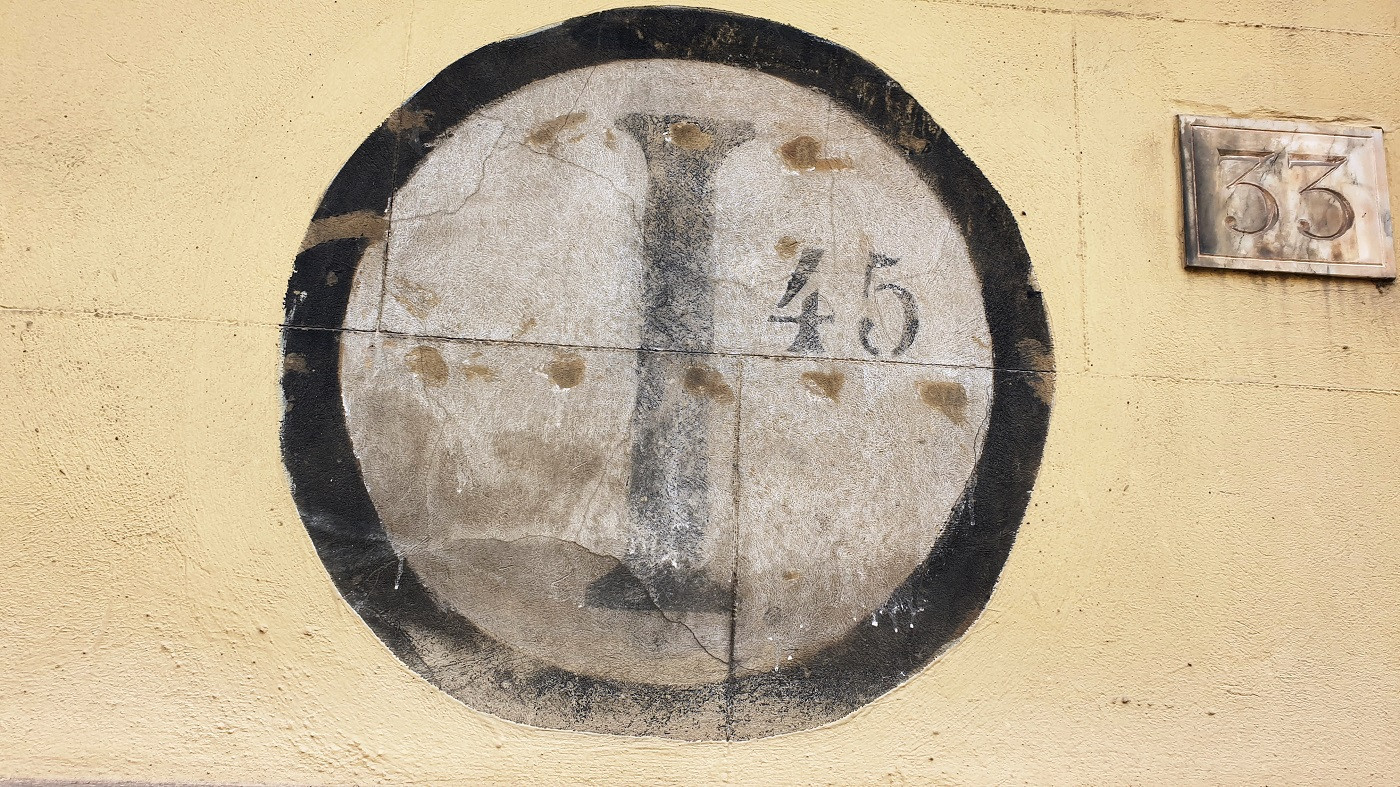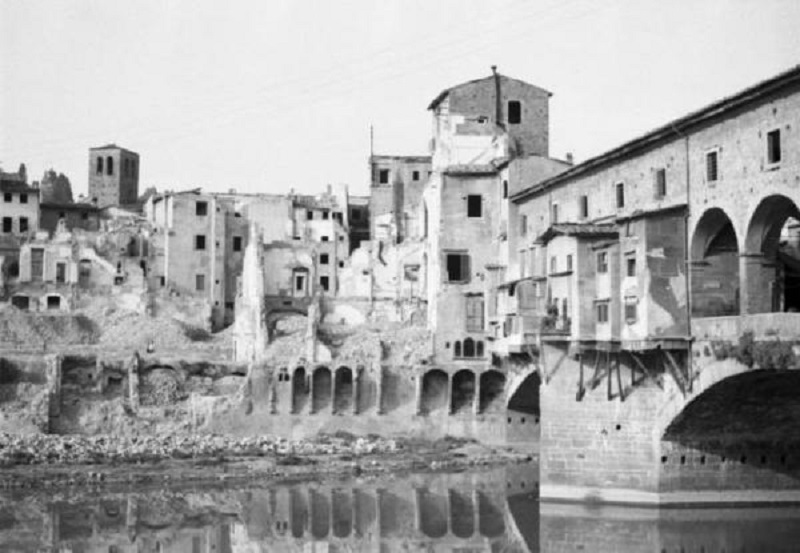
Street Art from a past not to be forgotten
On the walls of Florence you can often see discolored paintings dating back
to a distant era, circles with a black border with writings, arrows and letters
in the center. They are the signage for the anti-aircraft protection created during World War II, signaling the population the presence of anti-aircraft shelters,safety exits from these shelters and hydrants to put out fires. Weak traces, remainder of a past we hope will never repeat itself. They were made with a
substance then called membranite, a paint binder that proved to be very strong.
Let's see their meaning:
C = Cistern or Canal to take water
F = Fountain
Fp = Fountain with drinking water
I = Hydrant
P = Well - Pump
R = Refuge - Shelter
Rc or R in C = Shelter in the courtyard
US = Safety exit
US in C = Emergency exit in courtyard
V = Ventilation air intake for the shelter
Most shelters were cellars of residential buildings, but some were built ex-novo,
one of these was in Piazza della Repubblica. The bombings of the
Anglo-Americans, who used phosphorus bombs to cause fires, were numerous from
1940 to 1944: 25 attacks with fighters, 7 heavy bombings with fighter-bombers.
The dead were more than 700, numerous the injured.
The targets were the railways and in
particular the stations, but at the time calculations were not much accurate and bombs often fell further away, hitting civilian homes. A bomb exploded close to
the Santa Croce Church, far from every military targets. Some cities, though not Florence, wanted to mantain this memory. Faenza, with the help of the
Rotary Club, decided in 2017 to restore nine anti-aircraft identification
symbols of this type, next to which explanatory plates were placed.
Photo above:
a sign for the hydrant n° 45 in via G. Fabbroni.

The Bombed Ponte Vecchio, by Federico Patellani. Source: Wikipedia.



